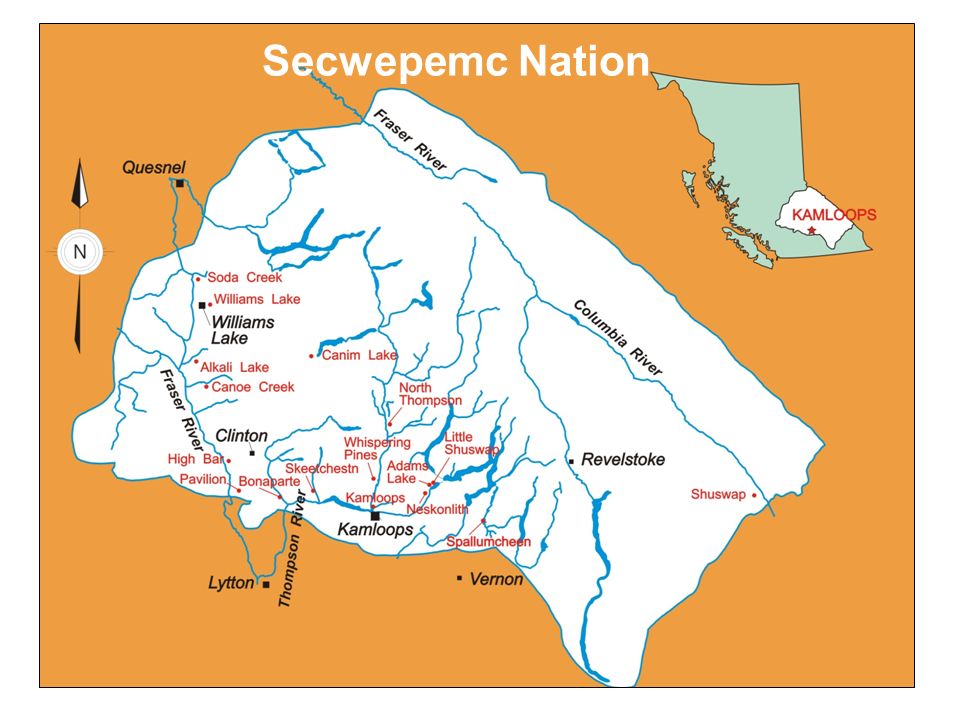
The name Secwépemc means “the spread-out people” (Ignace & Ignace, 2017) and describes the people who have for at minimum 10,000 years lived within the south-central Interior of what became known as the Colony of British Columbia in the late 1850’s. The territory of the Secwépemc people is called Secwépemc’ulecw and stretches approximately 145,000 square kilometers, originally including within it thirty-two recognized communities that have been categorized into 17 bands through the Indian Act and as a result of colonization. To this day, this large geographical land mass remains unceded, which means that the Secwépemc people never legally gave or signed away any right to their land.
Elder Louis Thomas speaks about Secwépemc Nation:
Thompson Rivers University operates two campuses within Secwépemc’ulecw, one on the traditional lands of the Tk’emlúps te Secwépemc (Kamloops campus) and the other at T’exelc (Williams Lake campus).
Let’s take a moment to listen to the correct pronunciation of each community within Secwépemc’ulecw that has so graciously been provided by Simpcw elder Mona Jules, Ted Gottfriedson and Marie Sandy.
[Embed pronunciation of each band from TRU’s website https://www.tru.ca/indigenous/indigenous-education-team/pronunciations.html]
Please take a few minutes to watch this wonderful video discussing language, land and culture of the Secwépemc people created by Valarie Johnson of Esketemc:
Secwepemctsín
The traditional language of the Secwépemc people is called Secwepemctsín, which has three distinct dialects: Northern, Eastern, Western. Prior to colonization, all members of the Secwépemc Nation, and many neighboring Nations, spoke this language fluently and often spoke more than one dialect.
Secwepemctsín contains within it invaluable ecological, cultural and historical knowledge of the Secwépemc people, including values, beliefs, social and political structures, spirituality and stories describing moral lessons. This language is inextricably linked to the land, and contained the teachings that were necessary to maintain Secwépemc culture and identity. This language was traditionally passed down to the next generations orally, but due to the compound effects of colonial policies and institutions, Secwepemctsín is now classified as an endangered language with less than 200 fluent speakers, with the majority being over 65 years old (Dunlop et al, 2018).
Please listen to Elder Louis Thomas speak briefly about Secwepemctsín:
If you are currently residing in Secwépemc’ulecw, as a sign of respect and in effort to build better relationships with the original people of this land please take some time to explore the resources below that will help guide you in learning some introductory greetings that you can incorporate into your personal and work spaces.
- Learn Secwepemctsín Online through TRU
- First Voices – Learn Secwepemctsín
- Tk̓emlúpsemc re Secwepemctsín 1 – A Beginning Course in Secwépemc Salish – Western Dialect
- Secwepemctsin (Secwepemc Language) – Research Guides – TRU
Culture and Beliefs
need to have authentic Secwepemc voices write this section
Resources for Further Learning:
[continue updating]